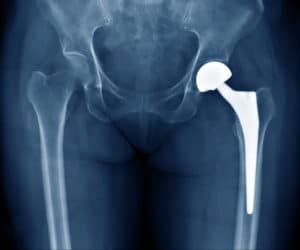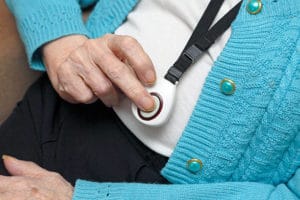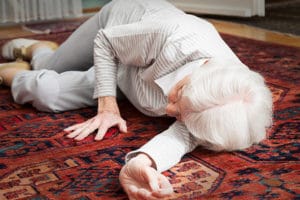You just blew 80 candles. Sedentary, overweight, your strength and your balance are not what they were before. You are more and more scared to fall. You have given up certain activities that lead you to social isolation. Your emotional health takes a blow. You have given some thought to register for a fall prevention program at your CLSC, but you ask yourself if it will help you.
And why not? You decide to take the bull by the horns and face your fear.
Without falling into catastrophic scenarios, we have to take falls seriously. Did you know that they are the main cause of injuries in the elderly (INSPQ, 2018)?
In Quebec, one elderly person out of five living at home has already reported having a fall. It’s not a little. This proportion increases with age and is higher for the women rather than the men.
A fall, what does it mean exactly?
Here’s a word you may have heard already. But what does it mean exactly?
It’s, according to the World Health Organization:
when a person inadvertently ends up on the ground or on any other surface located at a level lower than where the person was previously.
Now that the concept is defined, you probably ask yourself what increases the risk of falling? You tell yourself: “Am I at risk?”
The risk factors of falling
In the elderly, the risk factors of falling are numerous and often act in interaction. These include the characteristics of the person, his/her life habits and the environmental factors.
| Characteristics of the person | Life habits | Environmental factors |
| Reduction of muscular strength | Excessive use of alcohol and nicotine | Insufficient lighting |
| Weakening of balance | Sedentary | Obstacles on the ground |
| Chronic health problems | Inadequate nutrition | Absence of safety equipment |
| Taking several medications | Mobility aid | — |
| Excessive physical weight | Difficulty to accomplish the activities of everyday life | — |
Chronic health problems
Firstly, it is proven that the risk of falling increases with the presence of certain chronic health problems. Therefore, the elderly suffering from arthritis are at a higher risk of falling because of lower limbs and neuromuscular function disorders. Elderly persons that have diabetes are at an increased risk of falling because of peripheral neuropathies and walking disorders that develop with the passing of years. Cardiovascular illnesses are also associated with falls, mainly hypotension, hypertension and atrial fibrillation.
Polypharmacy
Be aware that polypharmacy is also a risk factor in known falls. The use of certain kinds of medications such as sedative-hypnotics, antidepressants or benzodiazepines significantly increase the risk of falling in the elderly.

Excessive physical weight
Excessive body weight can affect the balance, increase instability and therefore increase the risk of falling.
Addiction to smoking
Addiction to smoking consists of a risk of falling and of a femoral neck fracture because it increases bone loss and decreases the strength of long bones.
Socioeconomic characteristics
It should also be noted that socioeconomic characteristics of seniors have an impact on the risk of falls. For this reason, the elderly that are less educated, have a low income and living alone are at a greater risk of falling than those who are more educated, better off financially or that live in a couple.
What are the consequences of falling?
Falls are not harmless. They impose a heavy burden on the health system and decrease the quality of life. They often lead to a loss of autonomy and can precipitate living in an institution. The consequences are more serious in seniors of 65 years old and over.
The falls usually provoke hip fractures. Whether it’s a small or big impact, a hip fracture is a medical emergency that requires surgery. After surgery, the patient has to follow a rehabilitation program with a physiotherapist in order to regain flexibility and muscular strength of the hip. Regardless of the exercises in physiotherapy, it remains that half of elderly people who had a hip fracture never find completely their functional capabilities.

You may doubt it but falls can provoke deaths due to head traumas. Only in Quebec, between 2000 and 2016, there were 15,761 deaths that occurred because of a fall, which corresponds to an average of 927 deaths per year.
We have therefore interest to put all our efforts on prevention.
How can you prevent falls?
To prevent falls, it is important that you prevent chronic illnesses and that you adopt a healthy lifestyle. Moreover, it is well-known that doing regular physical activities contributes to reduce the risk of falling. Physical activity optimizes the strength and muscular endurance, balance, co-ordination and flexibility.
Falls prevention programs
In Quebec, there are prevention programs for falls according to whether the risk of falling is low, medium or high:
- The Integrated Dynamic Balance Program (IDBP) : This program is offered to seniors at low risk of falls living in the community to help them maintain muscle strength and balance.
The IDBP program lasts 12 weeks being two meetings per week. It consists of group exercises (balance, flexibility, strengthening), exercises to do at home, group exchanges on preventing falls and evaluations of the capabilities of the participants.
- The personalized multifactorial intervention (PMI) : this program works on risk factors for falls in the elderly, such as the home environment and medications. It targets seniors registered for home support services who have a greater loss of autonomy and who are at higher risk of falls.
- clinical prevention measures (CPM) : this program aims to act on the risk factors for falls in the context of clinical activities. Interventions target seniors at moderate or high risk for falls.
Tips for preventing falls
Chances are, you want to know more tips for preventing falls. Here are a few :
- Wear good, well-fitting shoes with non-slip soles.
- Walk with non-slip socks or slippers. You will also find these accessories in the Chic chez vous Boutiques ( https: / /www.chicchezvous.com/fr/accessoires-adaptes/pantoufles-adaptees.aspx )
- Take care of your feet for more stability.
- Medication verification.
- Eye Check (optometrists recommend that people 65 years of age and over have their eyes checked annually).
- Drink enough water as dehydration can cause dizziness and lead to a fall.
Falls prevention month website
Want to know more about prevention? Be sure to check out the Falls prevention month website, which is a gold mine of information. This site promotes fall prevention activities such as safe winter walking or exercise programs https://www.novembresanschute.ca/adultes/passez-a-laction-adultes/idees-dactivite
Home adaptation
Adapting the home helps reduce the risk of falls. This may be :
| Install good lighting inside and outside the house. |
| Declutter the rooms (avoid leaving items such as electric wires and extension cords lying around). |
| Keep the steps in good condition (their surface must not show any irregularities). |
| Install grab bars (eg bath, toilet). |
| Remove rugs or lay non-slip rugs around the house. Install a raised toilet seat. |
| Install a hand-held shower. |
| Adhesive strips in the bathtub and non-slip mat when leaving the bath. |
| Technical aids for performing hygiene care in a seated position (bath board, shower bench). |
| Make sure the phone is within reach. |
Now let's see how to increase safety in the activities of daily living...
At the grocery store
Choose when to shop for groceries: when you have the most energy and when stores are less busy to avoid being rushed. Use anything that has wheels (eg a cart) to bring your groceries home.
In the kitchen
Keep the items you use the most on the lower shelves. Use light dishes and use a stable step stool rather than a chair.
During maintenance tasks
Use cleaning accessories with long handles. Avoid bending and stretching. Use a lightweight sweeper.
Take one's time
It is often said: take your time, change position slowly, helps prevent falls. Indeed, rapid or sudden movements can cause dizziness or weakness. Hurry, whether on the stairs, to answer the phone or in the kitchen, can also cause accidents.
How to call for help during a fall
And if, despite the preventive measures, the fall does occur, it is very useful to have a personal emergency device. This device sends a signal to a central accessible 24 hours a day. This allows the elderly person to receive immediate help at the push of a button. The person should carry the device with them or keep it within easy reach.

And you in all of this
You are now sure, by now, that the falls have serious consequences. They always scare you a little. However, with the CLSC IDBP program and the resulting physical exercises, you have strengthened your muscle strength and your balance.
You therefore have a better understanding of the risk factors for falls. In doing so, you set yourself the goal of increasing your activity level and decreasing your body weight. Why not also redesign your interior so as to declutter the rooms in your house?
And above all, you want to take (finally) your time to get things done.

C’est un très bon article qui nous suggère de nombreux moyens pour éviter les chutes. Je vais le garder dans mes archives car c’est très utile d’avoir toujours en tête ces suggestions/conseils. Ça peut arriver à tout le monde et bien sûr particulièrement chez les personnes âgées.
Par ailleurs, j’ai une copine qui fait beaucoup de Taï Chi qui aide aussi beaucoup à garder l’équilibre. De mon côté, je fais du yoga et nous pratiquons aussi des poses qui demandent de pratiquer l’équilibre.
Merci.
I am sure this piece of writing has touched all the internet visitors, its really really pleasant
article on building up new weblog.
Thank you for every other informative site. Where else may just I
get that type of information written in such a
perfect manner? I have a venture that I’m just now working on, and I’ve been on the glance out for such information.
Hey! Someone in my Facebook group shared this site
with us so I came to give it a look. I’m definitely loving the information. I’m bookmarking
and will be tweeting this to my followers!
Superb blog and outstanding design and style.
Hola! I’ve been reading your weblog for a long time now and
finally got the courage to go ahead and give you a shout out from Porter Tx!
Just wanted to tell you keep up the excellent job!